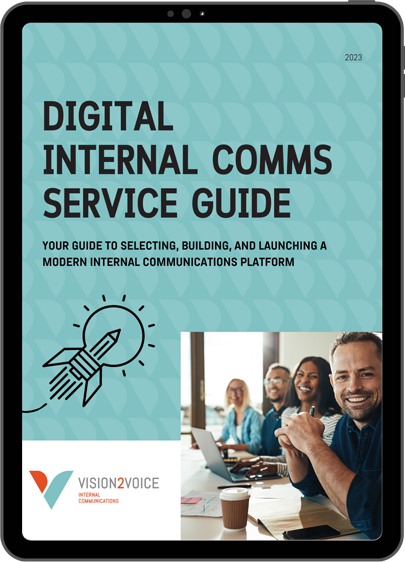 If you are alive, you feel emotion. Think about that for a minute.
If you are alive, you feel emotion. Think about that for a minute.
People experience one of about 34,000 emotions at any one time. These feelings drive how we think, our ability to learn, and how we act and respond to what is happening around us. Our emotions also deeply impact our relationships. Emotions are critical for creating meaningful connections and stronger relationships. In fact, our ability to understand and connect with each other on an emotional level nurtures social connection, caring and insight, which are all critical for developing strong relationships. And to truly thrive at work, we need to create strong relationships and strong connections.
“In a divided, virtual, and uncertain world, people in your company crave connection to each other, to their work and to something bigger.”
The way it is v. the way it should be
For so long, acknowledging and showing emotion at work has been forbidden territory. Career-limiting moves have traditionally included crying in front of your boss and laughing uncontrollably (until you cry) at something funny in a meeting. Our measures of success have focused on things devoid of emotion like financial results, productivity, and innovation. Work has been robotic and productivity at the expense of all else is creating burnout and mental health issues as we’ve never seen before.
The path to true success – where employees can fully express themselves at work, build strong relationships and do their best work can only happen when we embrace the whole human experience, including emotion. That’s why it’s time to stop asking people to check their feelings at the ‘door’ when they arrive at work – whether that’s the dining room table, home office, factory floor or office tower. Instead, we need to start thinking about strategies to fully embrace feelings – starting with how we communicate.
Finding the lifeboat
It’s clear — to build a more human employee experience, organizations need to STOP pretending that emotions at work don’t matter and START thinking about the practices that make feelings a welcome and important part of work. Here’s how our internal communications agency helps clients embrace emotion and use it to help employees thrive.
Remember, Emotions are Data
According to Dr. Susan David author of Emotional Agility, emotions are flashing lights to the things people care about.
At Vision2Voice, when we build personas, we do our best to include aspects that map employees’ emotions. When doing this work, we ask: what do employees care about? What makes a good day or a bad day? These questions help us understand how employees might react emotionally to what’s happening in the workplace. This information helps deliver relevant information and tell more meaningful stories.
In the search for understanding, emotions are something that can be measured. More and more, sentiment analysis can provide data that can help leaders and internal communications professionals understand how employees are feeling about a wide range of things at work (think news, changes, trends, etc.)
Include emotions in your goals and key performance indicators (KPIs)
Think about how you want employees to feel because of an internal communications initiative or campaign. The first step in this process is to understand how people feel now and think about what emotions you’d like to elicit as a result of the communication you are undertaking. For example, your goal might be to move people from being afraid and worried to feeling hopeful and inspired.
This advice comes with an important caveat: you don’t want to manipulate emotion but rather recognize emotion and use this understanding to get to a better place. There’s a subtle difference, and the way to get through this is to recognize emotion and communicate with empathy and with an understanding that every person will experience a different range of emotions.
Use language to build emotional literacy
Emotional intelligence starts with identifying our own emotions and the emotions of others. The sad truth is that most of us struggle to determine how we are feel. I’ve witnessed first-hand our limited ability to identify and name our emotions in the Fearless Organization Scan workshops I lead. These sessions start with a check-in where I ask everyone to share how they feel. This process is meant to create a safe place for dialogue, but what often happens is people struggle to name the emotion they are feeling. Most people provide the same two or three emotions (excited, happy or sad).
Professional communicators understand that words matter, and we can play a role in improving the language of emotion in our organizations. By recognizing emotion and naming emotion we can help people more accurately name and describe their feelings, leading to deeper understanding.
“Emotional literacy is the foundation of resilience, empathy, compassion, and self-awareness.” Brené Brown.
Stop sticking to the facts
Communications professionals are often ill-advised to stick to the facts. Feelings are messy and hard to talk about. Facts are straightforward and indisputable. The problem with this approach is that it creates a huge disconnect with employees because they don’t feel heard. When we stick to the facts and ignore employees’ emotions, communication becomes tone-deaf. The result — the gulf that exists between employees and management gets wider, deeper and more difficult to bridge.
Remember that tone also conveys emotion. While I appreciate short and straightforward communication, paring it down too far can often result in material that lacks emotion or heart. What would you rather read, three sentences that make you feel like your well-being matters or one sentence that makes you feel like another number?
Everyone feels differently
The reason there are 34,000 different emotions is that every individual feels differently. Recognizing and allowing for differences in how people feel enables people to take off their masks and feel heard and seen as individuals. After all, diversity is not just differences we can see on the outside, it is differences inside of people too.
Reactions to a tragic event may range from anger to grief to denial. And one person may experience all three (or more) of these feelings in response to an event. As communications professionals, it is critical to recognize the range of emotions people are feeling. For example, communication about a merger must acknowledge the loss that employees are feeling and the fear that their jobs may be eliminated. Similarly, announcements about office reopening must consider the range of feelings that people have related to the pandemic which could range from positive to negative feelings. This demonstrates empathy and helps employees feel free to be themselves.
Use emotion for impact
An emotion triggers numerous neurobiological responses in our bodies, and these either heighten or dull our ability to connect with communication. For example, communication that triggers an intense emotional response will be more memorable. For example, how many people remember in detail the moment they heard about the horrific attack on the World Trade Centre and remember exactly how they felt at that moment?
You do not want to play the emotions card too often, but triggering the right feelings can mean the difference between employees talking about the latest internal communication or ignoring it. My personal favourite is to use laughter, joy and amusement – emotions we need more of in our organizations. I love this Ted Talk about how important it is for leaders to use humour.
There is a reason the Vision2Voice logo is shaped like a heart. We believe that to build strong relationships and connections with employees truly, you need to understand what is going on in their hearts. I hope this blog helped you understand the importance of developing the ability to identify, understand, and communicate with employees with emotion. If you are stuck trying to figure out how to incorporate emotion in your internal communication strategy, reach out. We would love to help.






